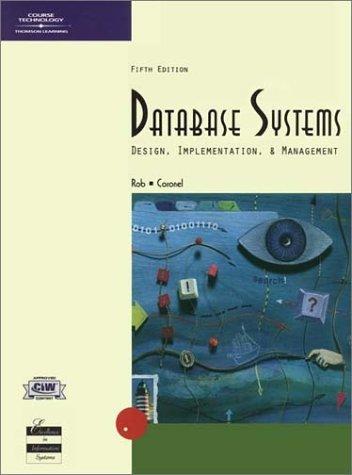


General Instructions For Problems #1--#6: Unless otherwise specified, you mustshow your equations adcculations to get full credit. Solutions should be either hand-written on engineering paper or printed out using a computer. . * Follow the presentation format discussed in the "Presentation Format" lecture slides. You may omit the Solution Check and Discussion for each problem o Either draw a double underline beneath or box the final answers you want graded. * Either draw a double underline beneath or box you want graded Problem #6 V2 10 V R2 = 4 /2R Express current in amperes (A). Write your final numeric results to three (3) decimal places. Requirements-Part 1 a) Using the given names and directions, apply the mesh current method to write the system of linear equations in matrix form (i.e., Ax = b) b) Using the equations from Part (a), write a MATLAB script to compute the mesh currents I1, /2, I3, /4, and I5. c) Using your script, what are the numeric values of the mesh currents I, h, I3, /4, and I5? Hint: I 0.722 A Name your MATLAB file: hwa1p6a.m Requirements-Part 2 Write a MATLAB script to plot the power (in watts) dissipated in the resistors Ri, R2, R3, R4, and R9 versus the voltage (in volts) in DC source V2. These are the graph specifications: . The range for V2 is from 0.5 V to 20 V in 0.5 V steps. Use linear scales. Each curve on the graph should be uniquely identifiable (e.g., different colors, line styles, or marker types) . Label the axes and provide a title. .Add a legend to the graph. Name your MATLAB file: hw_alp6b.m Hints: What you don't want to do is manually set up forty separate solutions to the circuit mesh equations. For efficiency, you should use a loop instead. Consider which single value changes in the matrix or vector (i.e., Ax - b) from iteration to iteration, and initialize just that element to the current V2 value. Power in a resistor can be calculated if you know the current value flowing through it. For the shared resistors in the circuit, remember to use the branch current in the power equation The solutions to your mesh equations are stored in a vector, so you can easily reference the particular mesh currents you want by using array indexing Requirements - Part 3 Questions to Answer: a) Look at the R9 curve from the power vs. voltage graph. What do you notice about its behavior that is different from the curves of the other resistors? b) Look at the circuit schematic and provide a plausible explanation for the results you saw in Question #1. General Instructions For Problems #1--#6: Unless otherwise specified, you mustshow your equations adcculations to get full credit. Solutions should be either hand-written on engineering paper or printed out using a computer. . * Follow the presentation format discussed in the "Presentation Format" lecture slides. You may omit the Solution Check and Discussion for each problem o Either draw a double underline beneath or box the final answers you want graded. * Either draw a double underline beneath or box you want graded Problem #6 V2 10 V R2 = 4 /2R Express current in amperes (A). Write your final numeric results to three (3) decimal places. Requirements-Part 1 a) Using the given names and directions, apply the mesh current method to write the system of linear equations in matrix form (i.e., Ax = b) b) Using the equations from Part (a), write a MATLAB script to compute the mesh currents I1, /2, I3, /4, and I5. c) Using your script, what are the numeric values of the mesh currents I, h, I3, /4, and I5? Hint: I 0.722 A Name your MATLAB file: hwa1p6a.m Requirements-Part 2 Write a MATLAB script to plot the power (in watts) dissipated in the resistors Ri, R2, R3, R4, and R9 versus the voltage (in volts) in DC source V2. These are the graph specifications: . The range for V2 is from 0.5 V to 20 V in 0.5 V steps. Use linear scales. Each curve on the graph should be uniquely identifiable (e.g., different colors, line styles, or marker types) . Label the axes and provide a title. .Add a legend to the graph. Name your MATLAB file: hw_alp6b.m Hints: What you don't want to do is manually set up forty separate solutions to the circuit mesh equations. For efficiency, you should use a loop instead. Consider which single value changes in the matrix or vector (i.e., Ax - b) from iteration to iteration, and initialize just that element to the current V2 value. Power in a resistor can be calculated if you know the current value flowing through it. For the shared resistors in the circuit, remember to use the branch current in the power equation The solutions to your mesh equations are stored in a vector, so you can easily reference the particular mesh currents you want by using array indexing Requirements - Part 3 Questions to Answer: a) Look at the R9 curve from the power vs. voltage graph. What do you notice about its behavior that is different from the curves of the other resistors? b) Look at the circuit schematic and provide a plausible explanation for the results you saw in Question #1









